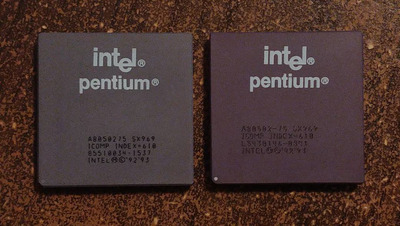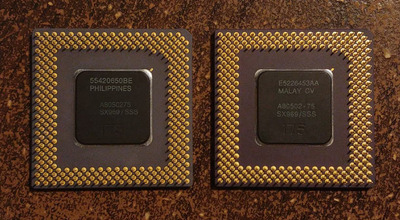First post, by Kahenraz
- Rank
- l33t
I have two Pentium 75 Mhz processors, one manufactured in Malaysia and the other in the Philippines. My Socket 7 motherboard does not support a 50 Mhz FSB so the only option for testing was an overclock. I was surprised to see that both processors did not clock consistently even though they are the same part number. I did not perform any tests beyond reaching a successful boot.
The Philippines processor was able to boot with the following settings:
60 Mhz * 1.5 @ 90 Mhz
The Malaysia processor was much better and was able to support a range of frequencies:
60 Mhz * 1.5 @ 90 Mhz
66 Mhz * 1.5 @ 100 Mhz
60 Mhz * 2.0 @ 120 Mhz
Has anyone tried reproducing overclocks with the same part and manufacturer? I'm curious if this is consistent for all processors from a given location or whether it's a lottery as to whether any given processor will reach a particular overclock.

